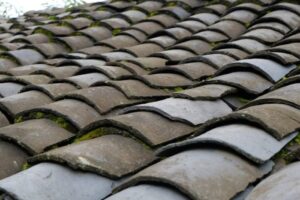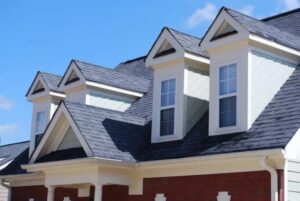
Low-maintenance roofing options are becoming increasingly popular among homeowners looking to save time and money on upkeep. With a variety of materials available, such as metal and synthetic options, these roofs not only promise durability but also provide a stylish edge to your home. Whether you’re considering a new roof or an upgrade, understanding the benefits and drawbacks of these materials can lead to a more informed choice that fits your lifestyle and budget.
In this guide, we’ll explore various low-maintenance roofing materials, their cost implications, and how they can be integrated with home security features, ensuring that your investment is both practical and protective.
Overview of Low-Maintenance Roofing Materials
When it comes to choosing a roofing option that requires minimal upkeep, several materials stand out in the market. Low-maintenance roofing not only saves time and money but also enhances the longevity of your home’s exterior. This overview will explore various low-maintenance roofing materials, their advantages and disadvantages, and how climate can influence the best choices for your home.One of the most popular low-maintenance roofing materials is metal roofing.
Metal roofs are known for their durability and resistance to harsh weather conditions. They can last 50 years or more with proper installation and are available in various styles, including panels and shingles. Another common choice is asphalt shingles, which are lightweight and relatively affordable. They generally offer a lifespan of 15-30 years, depending on the quality and climate. Lastly, synthetic roofing materials, such as rubber and composite shingles, can mimic the appearance of traditional materials while providing enhanced durability and lower maintenance needs.
Metal Roofing
Metal roofing is revered for its exceptional longevity and minimal maintenance requirements. It comes in various materials, including steel, aluminum, and copper, and is available in numerous styles and colors.
- Advantages: Metal roofs are highly resistant to wind, fire, and mildew. They can reflect sunlight, which helps keep homes cooler, potentially lowering energy costs.
- Disadvantages: Initial costs can be higher than traditional roofing materials. Additionally, certain metal roofs may be prone to dents from hail and can be noisy during rain or hailstorms.
Asphalt Shingles
Asphalt shingles are one of the most widely used roofing materials in North America due to their affordability and ease of installation.
- Advantages: Available in a variety of styles and colors, asphalt shingles are relatively inexpensive and can be installed quickly. They also provide decent protection against various weather conditions.
- Disadvantages: The lifespan of asphalt shingles is shorter compared to metal roofing, generally requiring replacement every 15-30 years. They are also more susceptible to mold and moss growth in humid climates.
Synthetic Roofing
Synthetic roofing materials, including rubber and composite options, offer innovative alternatives to traditional roofing styles.
- Advantages: These materials can mimic the look of wood or slate without the associated maintenance. They are typically lightweight, resistant to UV damage, and designed to last decades with little upkeep.
- Disadvantages: While synthetic roofing can be more durable, it often comes at a premium price compared to asphalt shingles. Some synthetic materials may not perform well under extreme temperature variations.
Climate Considerations
The local climate plays a crucial role in determining the best low-maintenance roofing option for a home.
- In areas with heavy rainfall, metal roofing’s water-shedding capabilities can prevent leaks and damage.
- In hot climates, materials such as metal can help keep homes cooler, reducing cooling costs.
- Conversely, regions with high winds may require roofing systems that can withstand storms, making the weight and installation quality critical.
Choosing the right roofing material not only impacts maintenance but also influences energy efficiency and the overall aesthetic appeal of your home.
Cost Implications of Low-Maintenance Roofing

Investing in low-maintenance roofing options often presents significant long-term financial advantages. While the initial outlay might seem higher compared to traditional roofing materials, the cumulative savings from reduced repair costs and prolonged lifespan can lead to substantial economic benefits over time. This analysis will break down the cost implications associated with low-maintenance roofing, highlighting the long-term cost benefits, potential savings on repairs, and a comparison of installation costs relative to ongoing maintenance expenses.
Long-Term Cost Benefits of Low-Maintenance Roofing
Choosing low-maintenance roofing can significantly reduce overall expenses related to home maintenance. While these materials may have a higher initial cost, their durability and resilience translate into fewer repairs and replacements over the life of the roof. For instance, materials like metal and slate can last for over 50 years, greatly outpacing traditional asphalt shingles, which typically last around 20 years.
The following points Artikel key financial aspects that contribute to the cost-effectiveness of low-maintenance roofing:
- Longevity: Low-maintenance roofs can last significantly longer, reducing the frequency and cost of replacement.
- Fewer Repairs: These roofs typically require less frequent repairs due to their durable nature, leading to lower annual maintenance costs.
- Energy Efficiency: Many low-maintenance roofing materials provide better insulation and reflectivity, potentially lowering energy bills.
- Increased Home Value: Investing in durable materials can enhance property resale value, appealing to prospective buyers.
Potential Savings on Repairs and Replacements
Different roofing materials offer varying levels of maintenance and repair savings. For example, fiber cement and metal roofing options are known for their resistance to weather damage and pests, reducing the need for costly repairs. In contrast, traditional roofing materials may necessitate more frequent inspections and repairs, leading to higher cumulative costs.
The following table illustrates estimated costs associated with common roofing materials over a 30-year period, factoring in installation and average maintenance costs:
| Roofing Material | Initial Installation Cost | Estimated Maintenance Costs Over 30 Years | Total Cost Over 30 Years |
|---|---|---|---|
| Asphalt Shingles | $7,000 | $15,000 | $22,000 |
| Metal Roofing | $12,000 | $5,000 | $17,000 |
| Slate Roofing | $24,000 | $2,000 | $26,000 |
| Tile Roofing | $18,000 | $3,000 | $21,000 |
This financial breakdown highlights that although initial installation costs for low-maintenance materials like metal and slate may be higher, the long-term savings on maintenance and repairs can lead to lower total expenses over the roof’s lifespan.
Installation Costs Versus Maintenance Costs
When comparing the initial installation costs of low-maintenance roofing materials with their maintenance expenses, it becomes evident that the former can offset the latter in the long run. For instance, while asphalt shingles may be cheaper to install, the recurring maintenance and replacement costs can surpass those of more durable options. The following insights underscore the importance of considering long-term economics in roofing choices:
- Upfront Investment: Low-maintenance materials require a higher initial investment, but this is balanced by lower maintenance costs.
- Long-Term Planning: Homeowners should evaluate not just the immediate costs, but also the projected lifespan and associated maintenance of each roofing option.
- Budgeting for the Future: Investing in durable roofing materials can lead to peace of mind and decreased financial burdens in the future.
Ultimately, understanding the cost implications of low-maintenance roofing involves recognizing the trade-offs between initial expenditures and long-term savings, guiding homeowners to make informed choices that benefit their finances and property value in the long run.
Integration of Low-Maintenance Roofing with Home Security

Low-maintenance roofing options not only provide a reliable shelter for your home but also enhance its security features. The right roofing materials can contribute significantly to the safety and durability of a home, acting as a deterrent against potential threats. Understanding how these materials interact with various home security aspects is essential for homeowners looking to make informed decisions.Certain roofing materials inherently offer enhanced security features.
For example, metal roofing is known for its durability and resistance to impacts, making it difficult for intruders to breach. Furthermore, materials like slate or clay tiles are not only aesthetically pleasing but also offer heightened protection against forced entry. They are heavy and hard to remove, creating a reliable barrier. Low-maintenance roofs can also provide better resistance against weather elements, reducing the likelihood of damage that can lead to vulnerabilities in your home’s security.
Considerations for Selecting Low-Maintenance and Secure Roofing
When choosing roofing materials that merge low-maintenance needs with security features, several factors should be evaluated. Here’s a checklist designed for homeowners to ensure they select the best options:
- Material Strength: Ensure the chosen roofing material can withstand impact and resist breakage.
- Fire Resistance: Look for materials that are rated for fire resistance to prevent the spread of flames.
- Weather Resistance: Choose roofing that can endure heavy winds, hail, and severe weather conditions.
- Weight of Material: Heavier materials can be more difficult for intruders to remove, adding an extra layer of security.
- Maintenance Requirements: Opt for roofing that requires minimal upkeep, reducing the chance of neglect leading to vulnerabilities.
- Installation Quality: Ensure a professional installation to prevent gaps and weaknesses that could be exploited.
Incorporating these considerations can foster a safer home environment while also minimizing the demands of maintenance over time. Each of these points plays a critical role in ensuring that the roofing system not only serves its primary function of protection from the elements but also acts as a crucial first line of defense against potential security threats.
“Investing in low-maintenance roofing that emphasizes security can lead to long-term peace of mind for homeowners.”
Final Conclusion
In summary, low-maintenance roofing options offer an ideal solution for those seeking to minimize home maintenance while maximizing safety and aesthetics. With an array of materials to choose from, the right roofing choice can yield long-term benefits and peace of mind. So, whether you are looking for durability or energy efficiency, these roofing solutions pave the way for a worry-free home experience.
Commonly Asked Questions
What are the most common low-maintenance roofing materials?
The most common low-maintenance roofing materials include metal, asphalt shingles, and synthetic roofing products, each offering varying levels of durability and aesthetics.
How do low-maintenance roofs save money in the long run?
Low-maintenance roofs can save money by reducing the frequency of repairs and replacements, leading to lower overall maintenance costs over time.
Can low-maintenance roofing improve home security?
Yes, certain low-maintenance roofing materials can enhance home security by being more resistant to damage and break-ins compared to traditional roofing options.
Are low-maintenance roofing options environmentally friendly?
Many low-maintenance roofing materials are designed to be energy-efficient and can contribute to a home’s overall sustainability, depending on the material chosen.
What should I consider when choosing low-maintenance roofing?
Consider factors such as climate, initial costs, long-term savings, aesthetics, and how the material integrates with your home security needs when selecting low-maintenance roofing.







